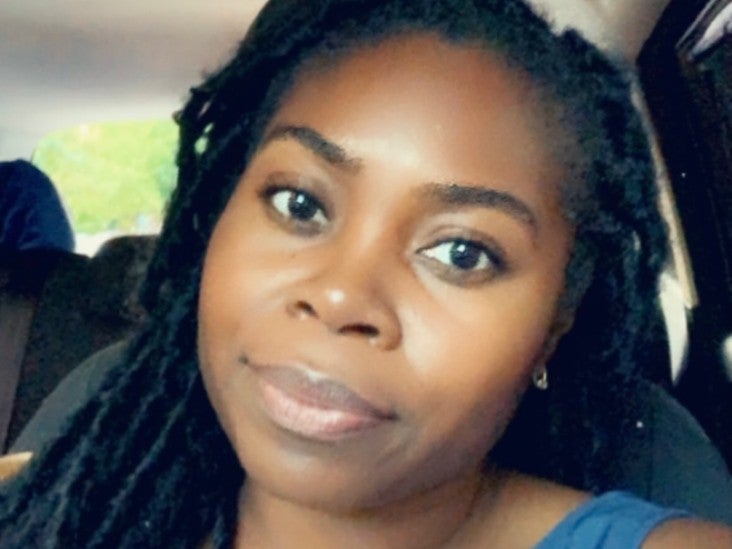
As a senior in college, I remember my mom going through a series of doctor’s appointments. She’d been complaining about lower abdomen pain for months.
After going back and forth to different doctors, my mother was finally diagnosed with a large uterine fibroid.
Uterine fibroids are noncancerous tumors that affect women in varied ways. Some experience heavy bleeding during their menstrual cycle, intense cramping, swelling of the abdomen, and back pain.
But it wasn’t until a routine exam in 2015, when I also received a heartbreaking diagnosis of uterine fibroids, that I truly understood what my mom went through.
My mom’s fibroid was the size of a softball. After much deliberation, her doctors determined that due to her age and the size of the fibroid, it would be best for her to undergo a hysterectomy.
We were told it would be a standard and simple operation — her doctors promised she would be back to her normal activity after a few weeks of recovery.
Her routine operation was anything but straightforward.
After the procedure, she began experiencing internal bleeding and had to be rushed back to the hospital. It turned into a multi-week stay.
Eventually she recovered, but she has since struggled with the hysterectomy triggering the onset of early menopause.
After witnessing my mother’s fight against fibroids firsthand, I was terrified when I learned at a routine appointment that I had them as well. My doctor assured me that my three uterine fibroids were tiny and nothing to worry about.
So imagine my horror when at my annual exam the next year, I learned that my fibroids had grown in size. On top of that, the number of fibroids had increased from three to five.
I immediately scheduled my vaginal ultrasound to have the fibroids assessed.
The ultrasound tech tried her best to be as gentle as possible and warned me that I would experience some mild discomfort. What I experienced was painful, and while I waited for the doctor to share the results, I began to silently weep.
Just like pineapples
My fibroids were growing on my uterus on a stalk-like structure, meaning they were pedunculated. I knew that word.
I’d taken a family trip to Hawaii 6 months prior. While on a tour of a pineapple farm, I learned that pineapples grow on pedunculated stalks. I would later try to propagate a pineapple plant inside my home, but the North Carolina cold came quickly.
So, there I lay there in the exam room, crying and comparing these growing fibroids to pineapples.
Right away, the doctor offered surgery as an option to remove the fibroids.
I was immediately transported back to that cold hospital room with my mother and quickly decided surgery was not an option for me. I also knew that fibroids could return even after they were removed.
Uterine fibroid embolization and a hysterectomy were also suggested, but I’d like to have children one day, so I sought out other options.
I talked with my doctor about alternatives to surgery, and prescription medication was offered. The caveat was that typically insurance wouldn’t cover the cost of the medication unless the patient had a surgery date scheduled.
The side effects of medication could include seizures, high blood sugar, heart attack, signs of a stroke, bone pain, and loss of movement in any part of your body. Additionally, if I were to stop the medication at any point, the fibroids would likely resume growth.
Armed with this information, I made the difficult decision to pursue holistic treatment options.
I’ve been fortunate to not experience any pain or heavy bleeding from my fibroids.
Before making the decision to try holistic treatments, I learned that one of my fibroids had grown to 8 centimeters in diameter, three others had grown to 5 centimeters in diameter, and my abdomen had swollen significantly.
Learning how to deal with these fibroids and the symptoms they cause has been a slow and challenging experience.
My current holistic treatment includes:
- working with naturopathic doctors
- transitioning to a primarily plant-based diet
- learning to effectively use castor oil packs
- focusing on weight loss
Though I’m excited about the natural journey of shrinking — and hopefully ridding myself of — fibroids, it has been daunting and at times overwhelming.
There are so many things to consider and keep track of. For example, I have a running list of vegetables that contain phytoestrogen, in an effort to lower my consumption of estrogen-rich foods.
I’ve found an online community that’s supportive and informative, which inspired me to create an online platform to do the same.
I started @BlackGirlsWithFibroids on Instagram in May 2020. As of March 2021, the page has around 700 followers and is actively growing.
I hope that sharing my journey will be a source of support for other women who are dealing with uterine fibroids.
Porshe Chiles is a global researcher from Dallas, Texas. She’s been living with uterine fibroids since 2014 and has managed reproductive issues since her college days. The growth of uterine fibroids led her to pursue a holistic approach to shrink and eliminate them. Though her fibroids have shown consistent growth, she continues to research all she can about naturopathic options. She’s learning to appreciate her ever-changing body, while working to build a supportive community for other women. Follow her journey on Instagram.
"story" - Google News
March 24, 2021 at 01:01AM
https://ift.tt/3lL85Ic
Uterine Fibroids: My Story of Holistic Healing - Healthline
"story" - Google News
https://ift.tt/2YrOfIK
https://ift.tt/2xwebYA
Bagikan Berita Ini














0 Response to "Uterine Fibroids: My Story of Holistic Healing - Healthline"
Post a Comment